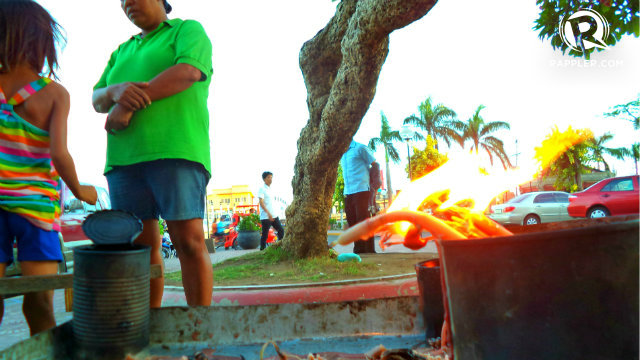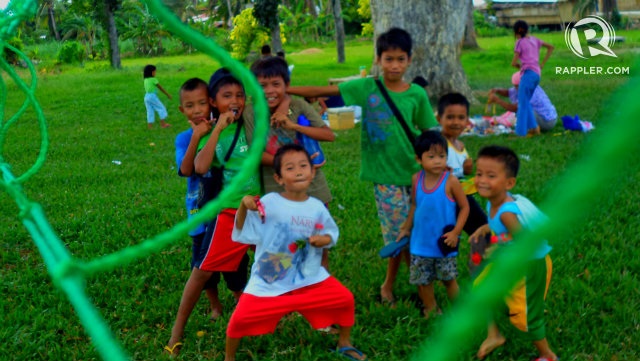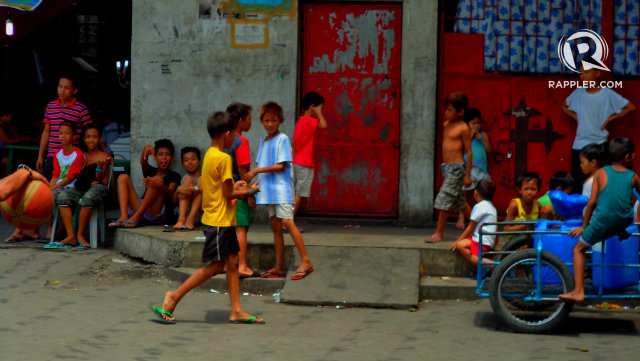SUMMARY
This is AI generated summarization, which may have errors. For context, always refer to the full article.
MANILA, Philippines – The Philippines is home to over 2 million working Filipino children aged 5-17 as of 2013, according to the Department of Labor and Employment (DOLE).
As of 2012, more than a million of them were not attending school.
Children as young as 5 leave school to engage in some form of labor. Some of them, we encounter on the streets.
Other children manage to juggle work and schooling. Such arrangements, however, prove to be difficult. For others, once they drop out, they rarely return.
|
Highest grade completed by Filipino working children |
|
|
No grade completed |
2.5% |
|
Elementary graduate |
16.6% |
|
High school graduate |
14.7% |
|
Post-secondary graduate |
Less than .02% |
|
College undergraduate |
1.5% |
(Source: DOLE 2012)
Some manage to reach certain grades, but are unable to graduate. Meanwhile, children who completely lack access to early education have it worse.
They miss out on basic classes such as hygiene, sanitation, health, and nutrition. The UN Economic and Social Commission for Asia and the Pacific (UNESCAP) stressed that these lessons are “critical for laying the foundation for children’s subsequent learning and development.” (WATCH: Help kids reach their 5th birthday)
They are also deprived of having different social and emotional interactions with teachers and other children – from which they can learn and practice proper communication, creativity, respect, self-discipline, and other values. (READ: How hunger affects child behavior)
A 2012 Unesco report stressed the importance of Early Childhood Care and Education (ECCE) which are mechanisms that support a child’s holistic development from age 0-8 through:
- Education
- Physical, social, and emotional care
- Intellectual stimulation
- Healthcare and nutrition.
- Family and community support
“Due to the rapid neural connections, brain development and growth that take place at this age, this period is considered a critical window of opportunity for optimizing children’s development,” Unesco said. (WATCH: Malnourished Peter Pan never grew up)
As of 2012, DOLE reported that 909,000 children aged 5-9 were out-of-school.
Out-of-school
A 2012 study by the Philippine Institute for Development Studies (PIDS) cited “lack of personal interest” and poverty as the top reasons for not attending school.
Other barriers include poor health and physical inaccessibility of schools (i.e., far distance, no transportation, lack of schools).
Poverty, according to PIDS, may also affect a child’s academic performance – this may be attributed to the observation that poor children usually eat less nutritious food; hence, their mental and physical health is more likely to suffer. (READ: Learning on an empty stomach)
|
Filipino children aged 4-5 |
2008 |
2011 |
|
Underweight |
24.6% |
23.2% |
|
Stunted |
38.4% |
37.4% |
|
Wasted |
4.4% |
5.5% |
(Source: National Nutrition Survey 2011)
If they are already in bad shape from an early age, the consequences may follow them up to adulthood.
The study also observed that children from poor families are less likely to be sent to kindergarten. “Households that have heads with more education appear to put more premium on a pre-primary aged child’s participation in school.”
In the Philippines, elementary is the highest educational attainment for the majority of household heads, the latest National Nutrition Survey (NNS) from 2011 showed.
|
Households by educational attainment of household head |
|
|
No schooling |
2.7% |
|
Elementary |
40.7% |
|
High school |
34.1% |
|
College |
21.6% |
|
Above college |
0.6% |
(Source: NNS 2011)
It can be a vicious cycle.
If the parents were unable to access adequate nutrition and education as children, they are less likely to be fully aware of proper childcare practices, unless interventions are made. They are also less likely to land well-paying jobs – either because of poor health or limited skill sets – hence lowering their chances of escaping poverty.
All these can put their children at risk of living the same cycle as they grow up.
If children are a country’s future, then long-term investments must be made as early as possible.
“Early child care and education experience (ECCE) has contributed to breaking the cycle of poverty; it also offers an entry point and platform for improving social equity and inclusion,” Unesco stressed. (READ: PH can lose trillions of pesos to malnutrition)
PH laws on kindergartners

Another problem is the lack of awareness of the laws and programs protecting children.
In 1974, the Philippines enacted the Child and Youth Welfare Code, which enumerates the rights of children, including the right to education, care, and an “efficient government.”
The 2012 UNESCAP statistical yearbook, however, revealed that the Philippines only had a 51.3% pre-primary enrollment rate – lower than our neighbors Vietnam (70%) and Thailand (100%). (READ: PH education lagging behind ASEAN countries?)
But the Philippines still fared better than other Southeast Asian countries:
|
Pre-primary education enrolment rate |
|
|
Indonesia |
Below 50% |
|
Laos |
Around 20% |
|
Myanmar |
Below 15% |
|
Cambodia |
Below 15% |
(Source: UNESCAP 2012)
In 2013, the Philippines created a law – Republic Act 10410 or the Early Years Act – which recognizes the age 0-8 as the “first crucial stage of educational development.” It mandates the “early childhood care and development” (ECCD) Council to strengthen community and family-level programs for children:
- Daycare services, child-minding homes
- Neighborhood playgroups
- Parent education and effectiveness services
- Training for daycare and barangay workers
- Home visiting programs
The council is also mandated to work with DepEd, the Department of Social Welfare and Development (DSWD), the National Nutrition Council, the Department of Health, and ULAP (Union of Local Authorities of the Philippines).
The “National System for ECCD,” however, was actually formed as early as 2000 through RA 8980 or the ECCD Act, which had the same provisions plus emphasis on the role of local government units (LGUS) in supporting ECCD programs.
The law affirms parents as a child’s “primary caregivers and first teachers.” ECCD programs are only there to provide support.
And as early as 1991, the country already crafted an “Education For All” (EFA) plan which also cited ECCD. The plan was in response to Unesco’s international call for EFA which is to be achieved by 2015.
Critics, however, say that the Philippines is good at planning policies but fail at actual implementation. (READ: How to address PH child malnutrition?)
In 2011, the Philippines was determined to provide “equal opportunities for all children to avail of accessible mandatory and compulsory kindergarten education” through RA 10157 or the ‘Kindergarten Act.’
The law declared kindergarten a part of the country’s basic education system and a prerequisite to Grade 1.
Public kindergartens are free of charge.
DSWD also began supplementary feeding programs (SFP) among public kindergartens in 2011. However, the SFP also experiences problems such as financial constraints.
Some LGUs and non-governmental organizations (NGOs) across the country also conduct their own education and nutrition-related programs.
Unfortunately, some parents remain unaware. (READ: Involving parents in school feeding programs)
In total, there are around 10.8 million Filipino children aged 5-9 as of 2012, according to DOLE.
Only some of them would have access to their basic needs. And sadly, not everyone could harvest their fullest potentials. – Rappler.com
How can we help fight hunger? Share your ideas with us, report what your LGU is doing, or recommend NGOs. Submit your articles, infographics, research and video materials to move.ph@rappler.com. Be part of the solution, be part of the #HungerProject.
Add a comment
How does this make you feel?




There are no comments yet. Add your comment to start the conversation.